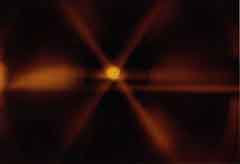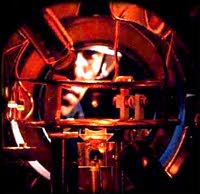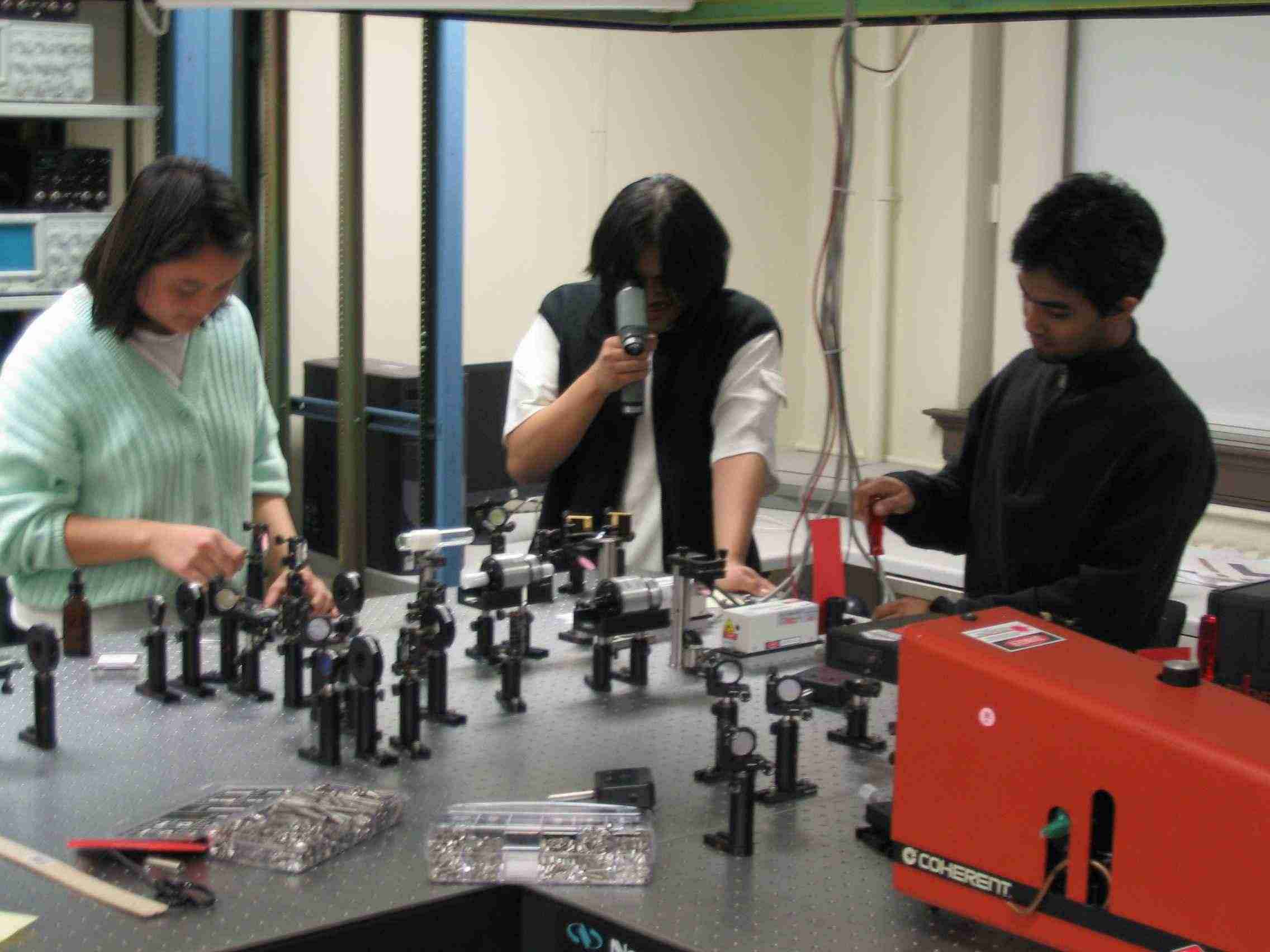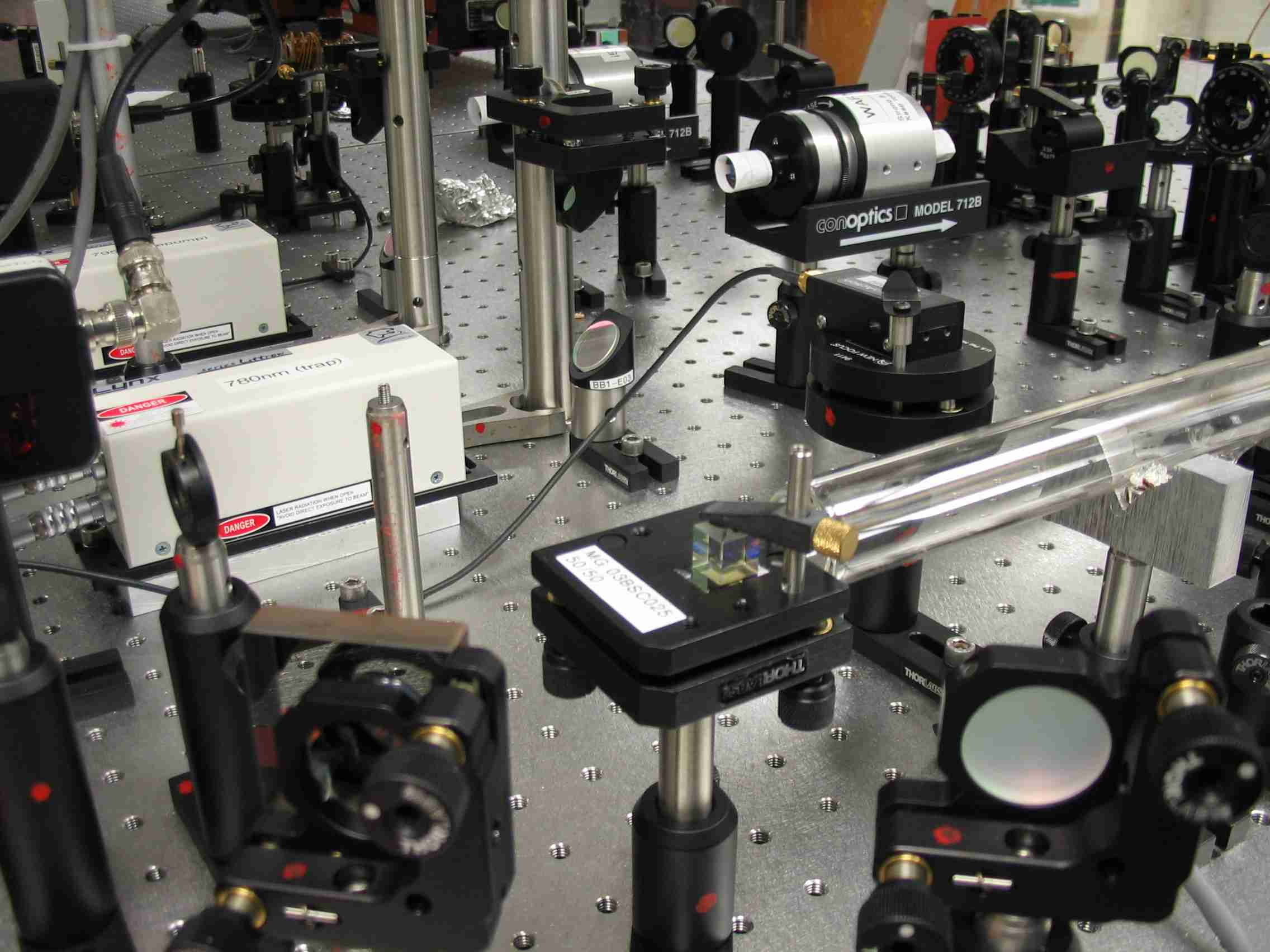
|
|
|
|
|
|
Email:
jmgrossman@smcm.edu Address: Department of Physics St. Mary's College of Maryland 18952 E. Fisher Rd. St. Mary's City, MD 20686 Phone: (240) 895-4367 Office: Schaefer 242 Lab: Schaefer 163 Research support from:  The Office of Naval Research  Research Corporation and St. Mary's College of Maryland |
Laser Cooling & Trapping: Microtraps


Images of sodium MOTs from NIST
Professor Josh Grossman's primary research program focuses on laser cooling and trapping of neutral atoms. This field draws on atomic and optical physics. Lasers and magnetic fields combine to cool atoms to a fraction of a degree above absolute zero—the coldest temperature possible and the point at which the atoms’ thermal motion stops (classically).
Specifically, the research aims to develop microscopic magnetic traps for neutral atoms. Until recently atom traps only allowed simple arrangements and movements of atoms. In the past few years, researchers have caught clouds of atoms in microscopic magnetic atomic traps, formed by wires on the surface of a substrate. Drawing the trapping wires on a substrate allows complex patterns that can be engineered to hold atoms in various places and to move them around. Research on these traps aims to develop the atom-trapping equivalent of the electronic integrated circuit microchip. These “atom microchips” will be scalable and integratable with other technologies.
Besides convenience, the miniaturization of atom traps onto “atom microchips” has additional benefits. The microscopic size means that atoms can be held in separate traps very close to each other. This proximity in turn means that they can interact with each other. With proper engineering this interaction can form the heart of a quantum logic gate.
Quantum logic uses the peculiar properties of quantum mechanics. For example, instead of using 0’s or 1’s as bits, quantum logic uses quantum bits (qubits) that can be 0 and 1 at the same time. Researchers have shown that if scientists could build a quantum computer that uses quantum logic, it could solve certain types of problems faster than classical computers can. Quantum computers would be particularly fast at factoring large numbers: the basis of most modern encryption. Communication using quantum information, on the other hand, could enable physically unbreakable codes.
The amenability of “atom microchips” to complex designs that can be scaled up to larger designs and integrated with other components makes them promising candidates for building a quantum computer.
 Thesanica Marcos, Eric Garcia, and Zahir Raman set up the lasers and optics. |
 On the optical table |
 Vivek Singh tops off the sorption pumps with liquid nitrogen. |
 Lindsey Garay assembles the hardware interface for the signal conditioning and data acquisition program she wrote. |